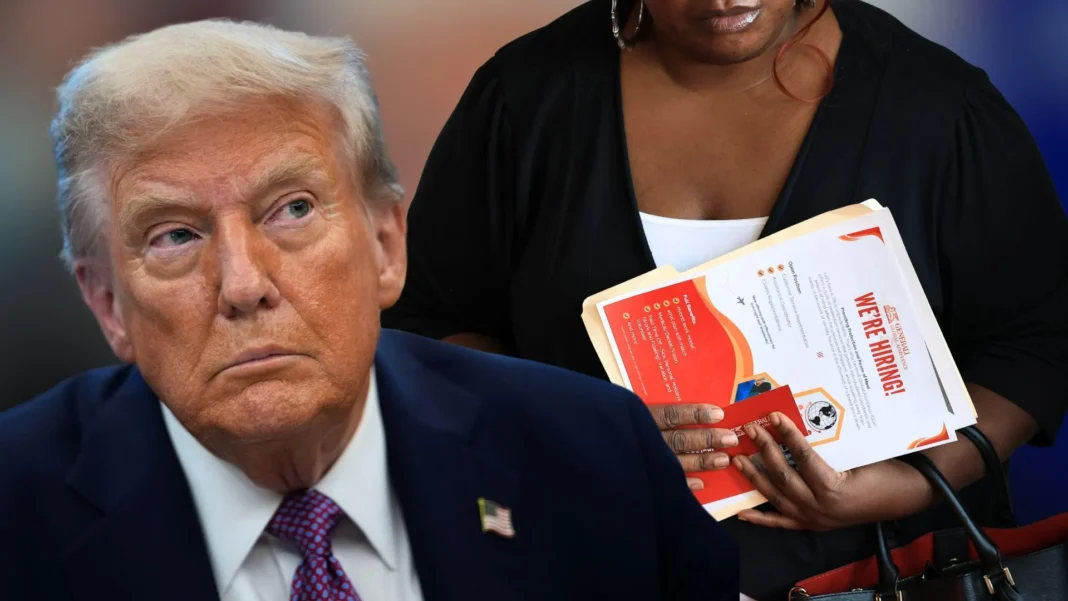President Trump and Black Employment: A Closer Look
In a recent post on Truth Social, former President Donald Trump claimed credit for “record” Black employment. This assertion comes during a time of rising Black unemployment rates in his second term, raising questions about the accuracy of his statement and the broader implications for the Black community.
The Context of Trump’s Claim
On Thursday night, Trump shared a meme targeting former Presidents Bill Clinton and Barack Obama, highlighting their records on issues pertinent to Black Americans. For Clinton, the meme reads “record Black imprisonment,” referencing the controversial 1994 crime bill. Obama’s label states “record Black welfare,” a pointed critique aimed at the Obama administration’s social safety net policies. Conversely, Trump’s section boasts “record Black employment.”
This post plays into Trump’s strategy of positioning himself as a champion for Black Americans, but his timing is crucial. In reality, Black unemployment has been increasing steadily during his current administration.
Historical Data on Black Unemployment
During Trump’s first term, Black unemployment hit a low of 5.3% in 2019. However, this number did not hold, as it soared to 16.9% in 2020 due to the economic fallout from the COVID-19 pandemic. More notably, while Trump touts his record, it is actually President Joe Biden who achieved the lowest Black unemployment rate in history at 4.8%. This context is essential for understanding the claims being made by Trump.
Recent Trends in Black Employment
As of now, the Black unemployment rate has seen a worrying upward trend. By the end of Trump’s first month in office this year, it stood at 6%. In a troubling development, it has since climbed to 7.5%. Economists and advocates express deep concern about these shifts, linking them to Trump’s tariff policies and cuts to the federal workforce, which disproportionately affect Black Americans.
Angela Hanks, chief of policy programs at The Century Foundation and former Department of Labor official under the Biden administration, explained, “You can see how a tariff policy that’s on again, off again creates uncertainty for businesses, slows hiring, and will inevitably have a disproportionately negative effect on Black workers.”
The Economic Implications
Hanks further elaborates that Black workers tend to be “last hired, first fired.” Thus, an increase in Black unemployment is both alarming for those directly affected and indicative of broader economic issues. The rising rate suggests a disconnect between policy decisions and their real-world ramifications, especially for marginalized communities.
Government Shutdown and Job Security
The current federal government shutdown adds another layer of concern for Black employment prospects. The White House has indicated potential layoffs among federal workers, a move that could severely impact job security for those already facing economic hardships. It’s worth noting that although Black Americans represent about 13% of the total U.S. population, they comprised 18.5% of the federal workforce at the end of 2024.
Policy Direction and Its Impact on the Black Middle Class
A report from the Center for American Progress published in August outlined that Trump’s “Make America Great Again” agenda poses a direct threat to the Black middle class. This assertion relies on data reflecting not just employment rates, but the broader socioeconomic stability of Black communities during Trump’s tenure.
In summary, while Trump seeks to frame his legacy positively concerning Black employment, the reality reflects a more complex and troubling situation. The implications of rising Black unemployment coupled with federal policies could have lasting effects on economic opportunity for Black Americans. The conversation around these issues remains vital and ongoing, shedding light on the intricate relationship between policy decisions and community wellbeing.



